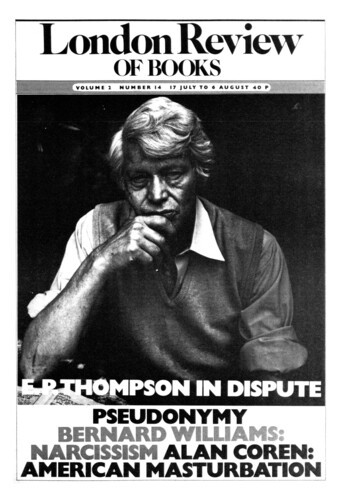Image-Makers and Image-Buyers
Bob Scribner, 17 July 1980
The half-century before 1525 saw the blossoming in south Germany of a remarkable school of limewood sculpture, largely devoted to the retable altarpiece, which is an altarpiece placed behind the altar. It encompassed around two dozen artists spread over three generations, and is associated with such great names as Tilman Riemenschneider, Veit Stoss and Hans Leinberger. It was a characteristic product of south German urban culture, manifesting many of the distinctive, and often contradictory, traits of the early Renaissance in Germany. Michael Baxandall’s excellent book continually reminds us that a school of this kind cannot be separated from the social context in which it flourished. It was an age of demographic growth and commercial expansion which saw the emergence of early capitalist relations of production in the metal industry and the putting-out system. All this brought rapid wealth and sharp social polarisation which was to culminate in the Peasants’War of 1525.

